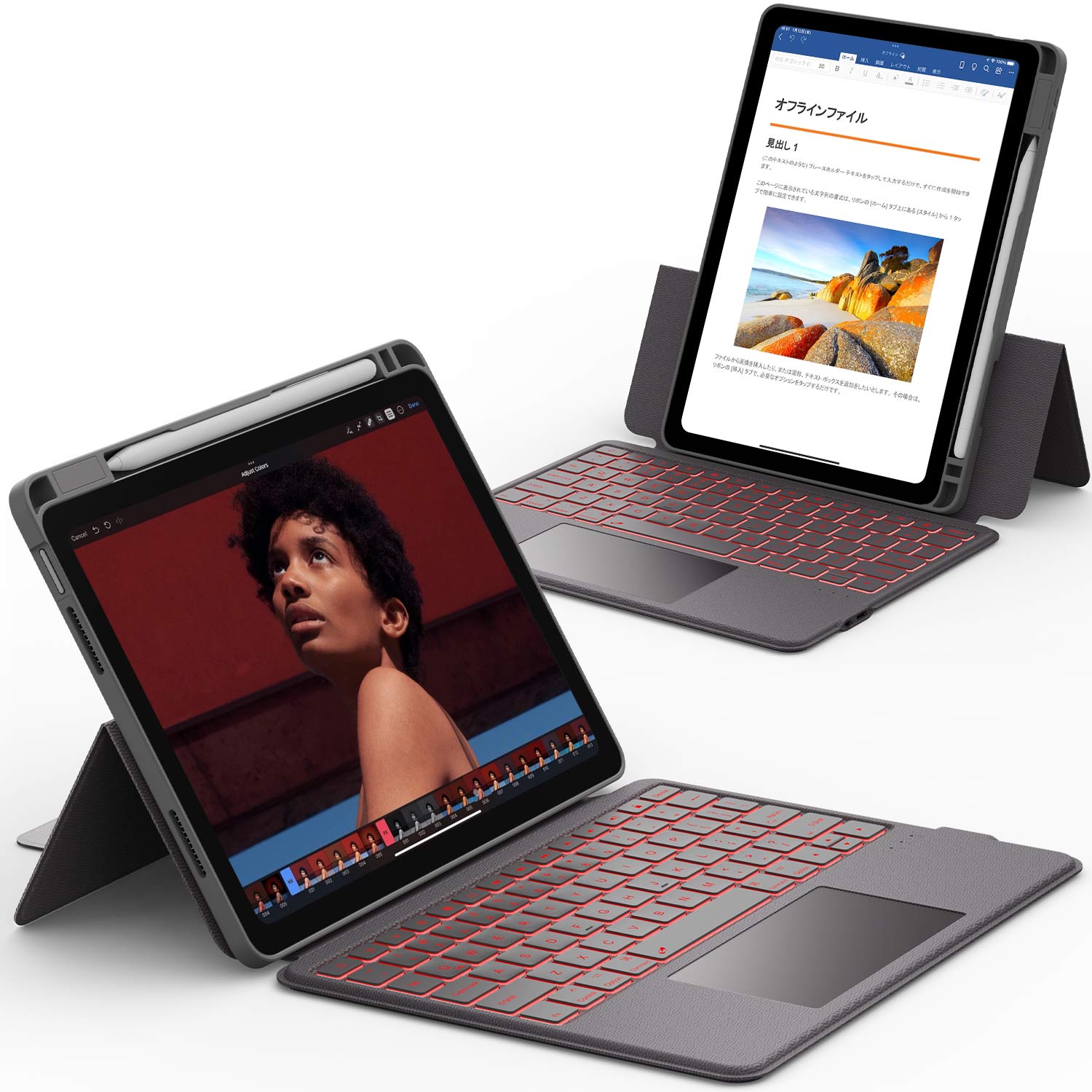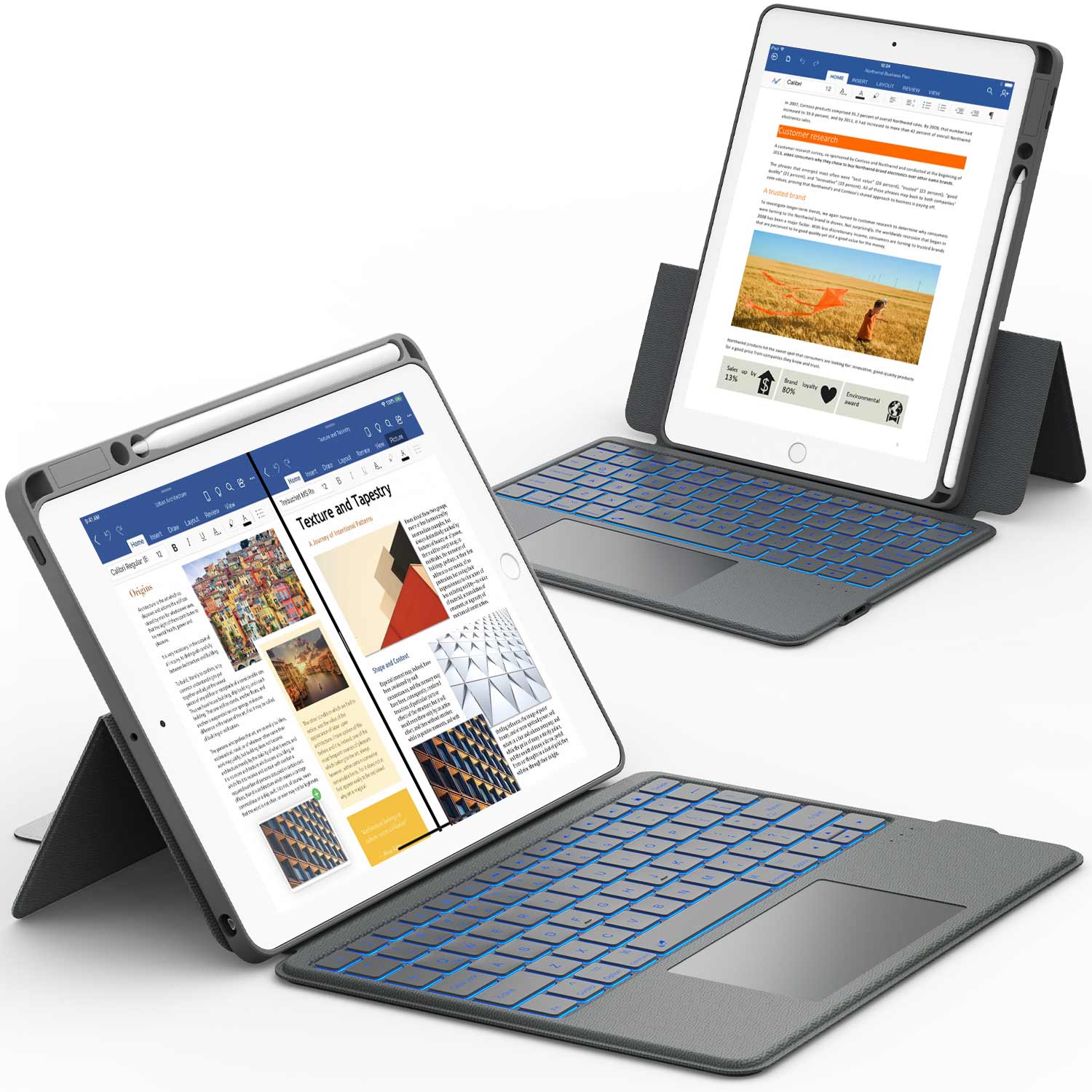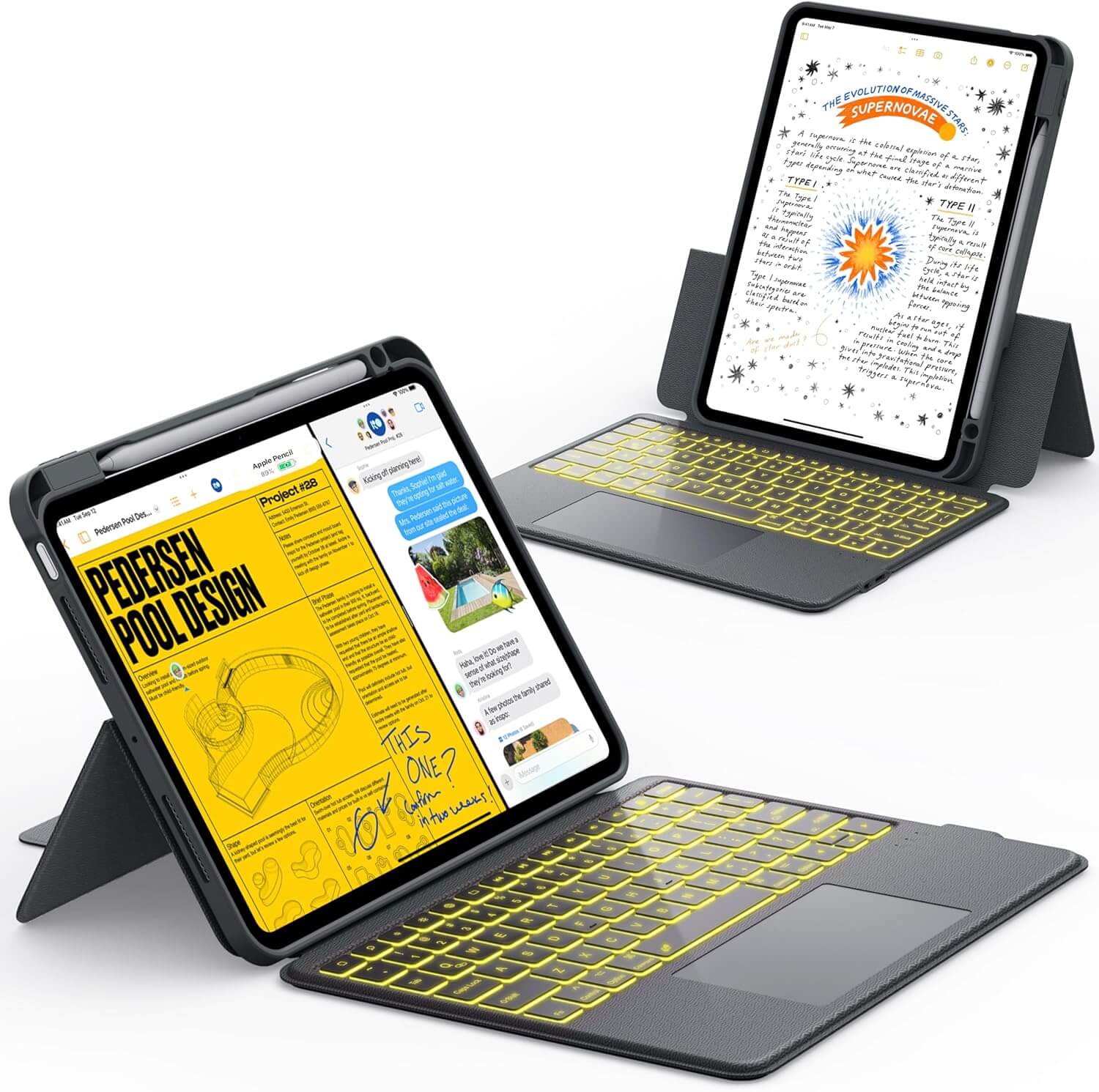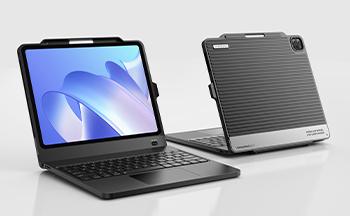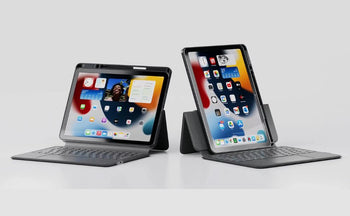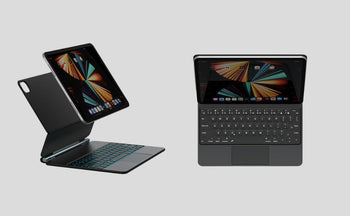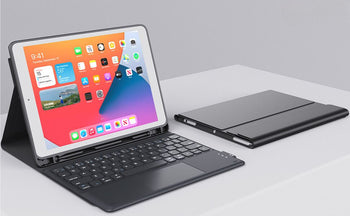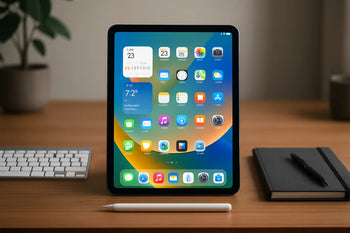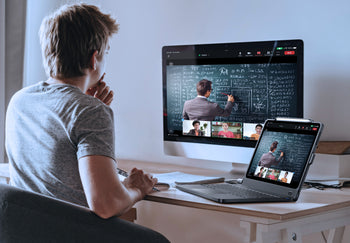Drawing on a tablet is more than finger-work, it’s body-work. The best drawing angle for the tablet reduces distortion, boosts precision, and preserves your posture.
Whether you’re a digital artist, architect, or note-taker, this guide helps you find the sweet spot.
Poor posture can lead to wrist pain, while an incorrect tilt can affect stroke accuracy. Whether you use an iPad Pro, a Wacom tablet, or an Android tablet, this guide reveals the optimal setup for comfort and creativity.
Quick Takeaways:
- 🎯 Optimal tablet tilt: 30°–45° angle enhances line accuracy and comfort
- 👩🎨 Find your personal sweet spot, comfort beats hard rules
- 🧰 Use adjustable stands or makeshift props (books, binder, tablet cases)
- 🪑 Position tablet centrally, aligned to screen—avoid twisting your body
- ✋ Take breaks & adjust posture to prevent neck, shoulder, or wrist strain
How to Determine the Best Drawing Angle for the Tablet
Choosing the best angle for your drawing tablet is important for both comfort and drawing accuracy. Different angles can affect your neck and shoulders, how you see your work, and how satisfied you feel after a long session.
Understand the Benefits of Tilt
A tilted tablet can make drawing feel more natural. Drawing on a slanted surface helps you maintain better posture and reduces the risk of neck strain. When you tilt your tablet, your head stays up and your shoulders stay relaxed.
Traditional artists often use easels at angles between 30° and 45°. This setup allows you to view your work directly, which helps keep lines and shapes true to size and shape. Drawing flat can cause your art to appear stretched or skewed due to the viewing angle.
Even a slight tilt improves perspective and detail. If you want to avoid awkward posture or tiredness, try adding a stand or using books to prop up your tablet.
Personal Comfort vs. Ergonomics
Comfort is personal, but it should be balanced with good ergonomics. Many artists on forums suggest using different angles based on how you like to draw or where you feel the least strain. For some, drawing with the tablet in their lap or mostly flat works fine.
Others recommend keeping the angle under 45°, especially for digital work. Always listen to your body. If your back, neck, or wrist hurts, try adjusting your setup. Make sure your elbow can rest on the desk and let your whole arm move, not just your wrist.
Tips for finding your best angle:
- Experiment with slight changes in height and tilt.
- Notice when you can draw longer without discomfort.
- Pay attention to how your hand and arm feel while drawing.
Common Angle Ranges Artists Prefer
Artists usually pick from a few main angle settings for their tablets. Here’s a quick table you can use:
|
Tablet Angle |
Good For |
|
0° (flat) |
Relaxed sketching, casual use |
|
15°–20° |
Light tilt for typing or short art tasks |
|
30°–45° |
Extended drawing, better line accuracy |
A flat surface helps when switching between drawing and writing on the same surface. Small tilts of 15° to 20° are gentle on your wrists and help with tasks that require mixed use, such as sketching and keyboard work.
The 30° to 45° range is popular for longer sessions, as it supports better posture and reduces strain on the neck and back.
Try different angles and watch how your body feels after an hour or two. This helps you find a setup that keeps you comfortable and focused for more extended periods.
Also Read: Best Tablet for Note Taking with Stylus
Setup Techniques to Achieve the Best Drawing Angle for the Tablet

Getting the right drawing angle makes tablet use more comfortable and helps keep your lines accurate. Good setup also helps lower the chance of neck, shoulder, and wrist pain while you work.
Use Adjustable Tablet Stands or Cases
A stand or case with adjustable angles is the easiest way to tilt your drawing tablet.
Many artists prefer clip-on cases or easel-style stands because they allow for quick adjustments between flat, low, and steep angles.
Some tablet stands have non-slip rubber feet that keep your device stable as you draw.
DIY solutions also work well if you do not have a store-bought stand. For example, you can set your tablet on thick books, ring binders, or even a sturdy board propped with blocks.
Make sure what you use is stable and won’t slide around.
Higher angles, between 20 and 30 degrees, help with visibility and posture, but your comfort should come first.
|
Prop Type |
Pros |
Cons |
|
Adjustable Stand |
Flexible, stable |
Costs more |
|
Case with Stand |
Easy, portable |
Limited angles |
|
DIY Books/Binder |
Cheap, customizable |
Maybe wobbly |
Desk Layout & Body Positioning
Your desk layout matters as much as your tablet. Place the tablet in front of you, centered with your body, to keep your shoulders level.
Move your keyboard out of the way or to the side if you do not need it often, so your arms do not bump into things while drawing.
A curved desk and a swivel chair make it easy to turn and reach everything without twisting your back.
If you need to rotate your body slightly for comfort, do so, but ensure that your screen and tablet are still aligned. Take short breaks to adjust your seating and avoid sitting still for too long.
Tips for easy setup:
- Center the tablet for balance
- Set keyboard aside, not between you and tablet
- Use adjustable chairs for comfort
Supporting Your Arms & Wrists
Keeping your arms and wrists supported is important. Many tablets feature a wide bezel around the edge that serves as a resting point for your hand or wrist.
Some artists place their palm or the side of their hand gently on this bezel to help steady lines.
If you need extra support, try using wrist rests designed for keyboards or a soft, rolled-up towel.
These keep your wrists at a gentle angle, reducing strain, especially during longer drawing sessions. Raised tablets may also keep elbows on the desk, letting your hand float naturally over the drawing surface.
Helpful supports to consider:
- Use bezels for wrist support
- Try padded wrist rests or small cushions
- Rest your elbows on the table for less fatigue
The right supports lower pressure on your wrist, making drawing smoother and more comfortable.
Why the Best Drawing Angle for the Tablet Matters

Picking the right angle for your drawing tablet can make your work more precise and comfortable. The angle you use affects both how your art looks and how your body feels after drawing for long periods.
Key Benefits of Finding the Right Drawing Angle
Reduces Visual Distortion:
- Drawing with your tablet flat on the desk can make your art look stretched or skewed because you are looking at it from a sharp angle.
- A tilted tablet allows you to view your work more directly, ensuring that what you see matches what you draw. This means your lines and shapes stay true, and it is easier to avoid mistakes.
Improves Comfort:
- Drawing at the wrong angle can strain your neck, back, and shoulders.
- Using a stand or propping your tablet at an angle allows you to sit up straighter and draw in a more relaxed manner, which is beneficial if you spend hours on your art.
Boosts Accuracy:
-
Most artists find that a drawing angle between 30 and 75 degrees works best.
With your tablet at a tilt, you get a clearer view, and your hand moves more naturally. This is especially helpful for detailed sketches, comics, or illustrations.
Improves Posture & Prevents Strain
Drawing for a long time with your tablet flat on the table can be hard on your neck and back.
You have to look down and bend your neck, which can cause fatigue and even lead to pain in your shoulders or wrists.
Tilting your tablet brings the screen up closer to eye level. That means you can sit up straighter and keep your shoulders relaxed.
Maintaining good posture is crucial for staying comfortable and preventing injury.
Benefits of a raised tablet angle for posture:
- Less neck strain from looking down
- Shoulders and arms stay more relaxed
- Easier to draw with your elbow and shoulder instead of just your wrist
- Reduced chance of long-term pain or discomfort
A stand or adjustable mount can make it easy to find the angle that feels best for you. For most people, keeping the tablet at a 30- to 45-degree angle offers a good mix of comfort and control.
Also Read: iPad Cases for Artists: 5 Features You Should Never Skip
Adjusting Over Time for Comfort & Accuracy

Finding the best drawing angle for your tablet is not a one-time decision. Your needs may change as you draw more, and your comfort and accuracy can improve by making small changes over time.
Practice with Different Angles
There is no single “correct” angle for everyone. What feels suitable for one artist may strain your wrist or shoulder.
Many artists test several angles, such as 20, 30, or 45 degrees, before settling on the one that feels best for them.
Try working at one angle for a few hours, then change it and take note of how your body feels. Watch for any pain in your wrist, hand, or shoulder.
If you feel sore or uncomfortable, try lowering or raising the tablet slightly to see if it helps.
Some find that a higher angle, like 45 degrees, reduces neck strain. Others prefer lower, around 20 to 30 degrees, for wrist comfort.
Remember, choosing your angle is about preventing pain so you can draw longer and with more precision.
Tips for trying angles:
- Use an adjustable stand so you can easily switch angles.
- Keep your hand relaxed.
- Switch angles between tasks, like inking versus coloring.
Set Ergonomic Breaks
Good habits make a difference, even with the best setup. Sitting in one way for too long tires your muscles fast. Take short breaks every 20 to 40 minutes to help avoid cramping or repetitive strain injuries.
During each break, stand up from your chair if possible. Stretch your wrists, rotate your shoulders, and roll your neck to keep blood moving and muscles loose.
Basic stretches can help:
- Shake out your hands.
- Circle your wrists in both directions.
- Pull each arm gently across your chest.
Keeping your body moving between drawing sessions helps you avoid stiffness and pain. Regular breaks help your focus, too.
Fine-Tune Setup
Your comfort will likely change as you draw more. This means you need to keep testing your setup. Every few weeks, revisit your drawing angle and see if it still feels right.
Maybe your workflow has changed, or you have gotten new accessories like a wrist rest. Adapt your stand tilt or screen height to meet your new needs. If you start feeling discomfort, make a small adjustment and test the results.
Make a checklist:
- Is your wrist straight and relaxed?
- Are your shoulders down, not hunched up?
- Can you reach all parts of the tablet without strain?
Tuning your space for comfort does not take long, but can keep you drawing safely and accurately for years.
Also Read: Top 15+ iPad For Photo Editing Apps to Enhance Your Images
Health and Posture When Drawing on a Tablet
Sitting correctly and positioning your tablet at the right angle can help you avoid pain and stay comfortable while drawing for extended periods.
Minor changes to your workspace, tablet position, and habits can protect your neck, back, shoulders, and wrists.
Preventing Strain and Fatigue
Drawing on a tablet for hours can lead to discomfort or pain if your setup is not right. Tablet angle is important.
Keeping your tablet at a slanted position, about 30 to 45 degrees, helps reduce neck strain. It makes it easier for your eyes to see your work without straining to look too closely.
If your tablet is flat, you may bend your neck and hunch your shoulders, which can lead to pain over time. Using a tablet stand can help you find the best angle.
You can also adjust the stand as needed to match your drawing style or change positions during longer sessions.
Take regular breaks, even just for a few minutes, to stretch your fingers, wrists, and shoulders. Try these actions:
- Set a timer for a break every 30 to 60 minutes
- Open your hands wide and stretch your fingers
- Roll your shoulders and gently rotate your neck
Small routines like these can help stop tiredness and keep you drawing comfortably.
Maintaining Proper Posture
Good posture keeps your spine straight and your muscles relaxed. Sit with your feet flat on the floor, knees bent at a right angle, and back straight. Your head should be slightly forward but not jutting out.
Set up your workspace so your tablet is at chest level and your arm can move freely. Avoid keeping your wrist in one position for too long. Some people find it helpful to switch drawing hands or change hand posture from time to time.
Think about the following tips for good posture:
- Use a chair that supports your lower back
- Keep your shoulders relaxed and level
- Place the tablet where your arm can move without reaching
Proper posture can help you draw longer without getting sore. It also makes it easier to see your work and make accurate strokes.
Tools and Accessories for Optimizing Tablet Angle
Picking the right tools can help you find a comfortable way to draw on your tablet. The proper setup can protect your neck, wrists, and back, making it easier to work for more extended periods.
Stands and Adjustable Mounts
A tablet stand is one of the simplest and most effective ways to control the angle of your device. Most stands offer several angles, often ranging from about 15° up to 45°.
Adjustable stands allow you to raise or lower the tablet, reducing the need to hunch over your desk.
Some stands use a folding design, while others have sturdy legs or clamps. Look for stands made of metal or strong plastic for better support. Many artists find a 30° to 45° angle feels best for drawing.
Why stands help:
- Let you position the tablet at eye level
- Lower strain on your neck, shoulders, and wrists
- Work with both small and large tablets
- Foldable designs for easy storage
Adjustable mounts attach to your desk and can be moved up, down, or side to side. They work well if you need more movement or want to free up desk space.
Using Keyboard Cases with a Stand
Keyboard cases that include a kickstand are a good option if you use a tablet and type frequently.
These cases can tilt your tablet, so you can quickly switch from typing to drawing. Some keyboard cases have several angle positions, typically ranging from 20° to 35°, which can make drawing more comfortable.
Main benefits:
- Lightweight and portable
- Quick to set up or pack away
- Protect your tablet from scratches and bumps
- Good for casual drawing sessions
If you want more stability or higher angles, a separate, adjustable stand may be a better option than a keyboard case stand.
Keyboard cases are best for basic use and lighter tablets, but they make it simple to draw anywhere.
Frequently Asked Questions
Finding the right angle to use a drawing tablet can help reduce strain and make drawing more comfortable. The right setup also enables you to get more accurate results and maintain good habits.
What is the best viewing angle for a tablet?
A drawing tablet should usually be set at an angle between 30 and 45 degrees. This angle allows you to see the screen clearly without straining your neck.
If your tablet has an adjustable stand, you can change the angle to match your comfort level.
Is a flat or inclined tablet better for drawing?
Many artists prefer a slightly inclined surface because it mimics the angle of a traditional drawing board or easel. An incline helps avoid distortion in your artwork and encourages better hand movement.
A completely flat tablet can cause neck and wrist strain if used for long periods.
Can you draw with the tablet on your lap?
You can use a tablet on your lap for short sessions, but it may not provide the best support for your arms and back. Drawing on your lap can also make it hard to keep a steady hand.
For longer drawing times, a stable tabletop setup is better.
What angle reduces neck and shoulder pain?
Setting your tablet at a 30 to 45 degree angle can help lower neck and shoulder pain. This keeps your head and spine in a more natural position and reduces the need to hunch over.
Raising the tablet and keeping your shoulders relaxed provides extra comfort.
How do you position your drawing tablet?
Place your tablet so the top edge is at or just below eye level. Rest your arms and elbows on the desk to keep them relaxed and lower fatigue.
Try to sit upright with your feet flat on the floor while drawing. Adjust your chair and tablet stand to help you keep good posture.
